“I Love Reverse Osmosis, I’ll NEVER Buy Bottled Water Again!”
Pros… and Cons about reverse osmosis from a reverse osmosis pro. Some key reverse osmosis factors to consider before purchasing a reverse osmosis drinking water system.
Pros: Quality Water, Know Where Your Water Is Coming From, Removes Contaminants, Better Tasting Food, Non-Electric Processing, Minimal Maintenance, Save Money. Cons: Clogging Filters, Initial Investment, Regular Filter Replacement, Slow Water Production, Removes Beneficial Minerals, Water Is Too Pure.
I’ve provided as much detail and relevance as I could without watering things down with fluff (Sorry about the water joke). I’ve also added some gauges to help describe how important each Pro or Con is.
14 Pros Of Reverse Osmosis
| Pros | What it means to you | How it works |
|---|---|---|
| Exceptional Water Quality | Healthier Drinking Water For You And Your Family | Multi-Stage Water Filtering |
| Removes Many Contaminants | Reduces Dissolved Solids And Chemicals In Your Water | Semi-Permeable Membrane Filtering |
| Know Where Your Water Is Coming From | Makes Your Homes’ Water, Your Drinking Water | Improves The Quality Of Your Existing Water |
| Removes Chlorine and Fluoride | Removes Chlorine And Fluoride From Municipal Water | Chemical Filtering Carbon Filters |
| Better Tasting Water | Better Tasting Water Means Your Family Will Drink More Water | Removes Impurities That Cause Odd Taste |
| Better Tasting Food | More Pure Water Means More Pure Tasting Foods | Less Impurities In Your Water |
| Non-Electric Water Filtering | No Need To Install Electrical Outlet | Uses The Water Pressure From Your Homes’ Water |
| Minimal Maintenance | You Only Need To Change Filters Every 6 To 12 Months On Average | Simple To Change Filters That You Can Do Yourself |
| Saves You Money | You Can Own A Reverse Osmosis System For Less Than The Cost Of 10 Cases Of Bottled Water | Reverse Osmosis Makes Filtered Water For Pennies Per Gallon |
| Convenience | Crisp, Thurst Quenching Water On Demand | Filtered Water Is Stored For Immediate Use |
| Odor-Free Water | No More Odd Smelling Water | Impurities That Cause Odors In Water Have Been Removed |
| No Water Jugs To Change | No Need To Store And Lift Heavy Water Jugs | Your Homes’ Water Is Filtered, No Need To Bring In Outside Water |
| No Expensive Service Calls | No Complicated Water Filtering Systems | You Can Easily Change Your Own Filters |
| No More Cloudy Ice Cubes | Fewer Impurities In Your Water Means Clearer Ice Cubes | Reverse Osmosis Reduces Impurities That Make Ice Cubes Cloudy |
Pros Of A Reverse Osmosis Drinking Water System.
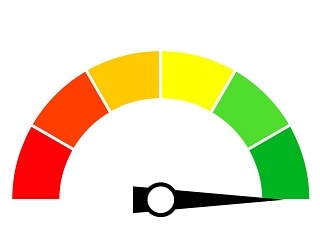
Exceptional Water Quality:
The process of reverse osmosis was developed to desalinate water from the ocean to make it drinkable. To do this requires exceptionally filtering that you can now use right in your home to provide you and your family with drinking water that is far better than any other home water filtering method.
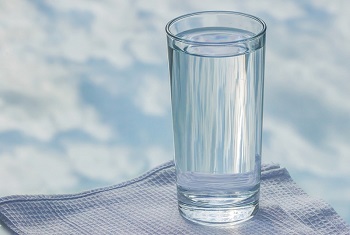
In fact, using a reverse osmosis drinking water system in the average home will produce drinking water that has a lower level of dissolved solids in it than most popular bottled water brands.
Private wells can contain very high levels of salt which is not at all healthy and tastes terrible. Even worse, contaminants like pesticides, herbicides, and bacterias are commonly found in many wells, and they cannot be removed by a simple filter.
Municipal water suppliers add chlorine to disinfect the water before it is delivered to your home, but they do not remove it after the water has been disinfected. Also, many municipal water companies add fluoride to help to improve the health of your teeth and gums.

Removes Many Contaminants:
Lead
Arsenic
Copper
Nitrates and Nitrites (hexavalent & trivalent)
Chromium
Selenium
Radium
Barium
Cysts (Cryptosporidium)
Total Dissolved Solids (TDS)
If you don’t like the smell and taste of chlorine in your water, and you don’t want added fluoride in your drinking water, a reverse osmosis drinking water system with an activated carbon filter is perfect for you.
An activated carbon filter is different than a reverse osmosis membrane as it can remove particles that are much smaller than the reverse osmosis membrane can catch.
Having a reverse osmosis drinking water system that has an activated carbon filter along with a reverse osmosis membrane will provide you and your family with quality water without the unwanted salt and chemicals that can be found in many water supplies.
TRY THIS: Since reverse osmosis water is very pure and free of unwanted tastes and flavors, add some of your own.
Slice up some lemons and limes and let them sit in your reverse osmosis water for a few hours for a refreshing summer citrus drink.
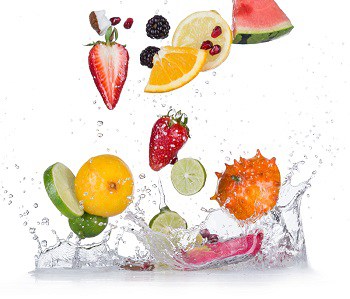
Get your kids to drink more water by adding some unsweetened fruit drink mix and some pineapple juice to your reverse osmosis drinking water, the kids will love it, and you will be happy that it is not full of processed sugar.
Make Ice tea as you’ve never tasted before because the reverse osmosis water that you are making it with has not added any unwanted flavor. Enjoy great Ice tea flavor and nothing else.
Check out 14 Ways To Make My Reverse Osmosis Water Taste Better!
Because a home reverse osmosis drinking water system is able to remove up to 99 percent of unwanted Total Dissolved Solids (TDS) in your drinking water, along with many other unwanted impurities, you can enjoy delicious pure-tasting water right from your home anytime.

You Always Know Where Your Water Is Coming From:
Bottled water companies may have many bottling plants, getting their water from who knows what kind of water supply.
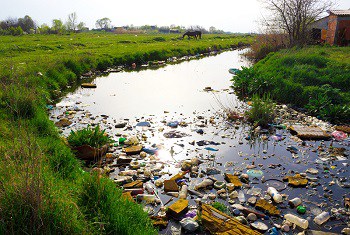
Even though they all have strict regulations on certain contaminants to be removed from the water, there are plenty of contaminants in water that they don’t have to monitor.
Buy having a reverse osmosis drinking water system right in your home, you always know that the water your family is drinking is from a water supply that you know and trust.

Removes Unwanted Chlorine and Fluoride From Municipal Water:
We all want to drink more water because it is essential for a healthy body and healthy skin. Because we want to have out water as free of chemicals as it can be, a reverse osmosis drinking water system removes the chemicals that we would rather do without.

If your water comes from a municipal water supplier, it should have been treated with chlorine to make it healthy to drink. Unfortunately, chlorine itself is not at all healthy to drink.
Because of this, a reverse osmosis system with an activated carbon filter is excellent for removing the chlorine that has been put into your water which is a good thing, but you want it removed because the taste of chlorinated water is a bad thing.
Now we all know that fluoride is good for our teeth, but that doesn’t mean that we want to be drinking it in every glass of water that we drink.
A reverse osmosis system can remove the fluoride that has been added to your water because you brush three times a day with fluoridated toothpaste already.

Better Water Means Your Family Will Drink More Water And Less Sugary Drinks:
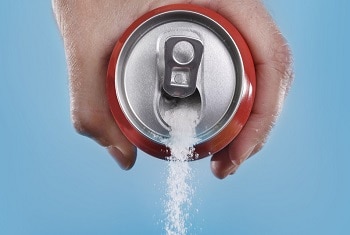
Think about it, if your family knows that there is great tasting water right at home, why would they go out of their way to purchase expensive sugary sodas or power drinks.
Once your family gets into the habit of getting water right from your reverse osmosis drinking water system, they won’t even think twice as they go right to your RO to fill up their personal water bottles.

Enjoy The Taste Of Your Food The Way That It’s Supposed To Taste:
More odors and tastes in your water naturally mean more odors and tastes in the food that you prepare with it.
When you make chicken soup with reverse osmosis water, all you will taste is the chicken and the delicious vegetables and herbs that you have added to your soup.
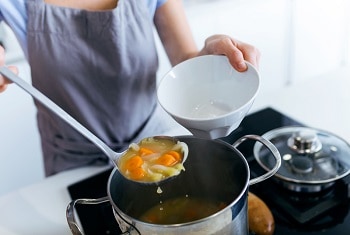
What you won’t taste is excessively salty soup or smell soup that smells like a swamp.
Gourmet coffee and delicate teas will have all the flavor that is intended without any unpleasant bitterness or after tastes. Make ice tea or fruit drinks without adding that extra salt that you would normally be adding when using unfiltered water.
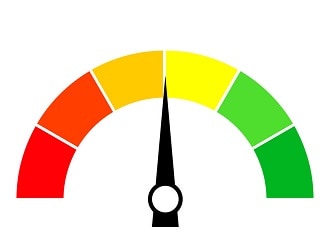
Non-Electric Water Processing:
A reverse osmosis drinking water system processes your water without any need for electricity. Your reverse osmosis will deliver plenty of quality drinking water that is filtered by your home’s water pressure alone.
Some premium reverse osmosis drinking water systems have an ultraviolet water purification stage to them but even this process takes very little electricity.
Takes Up Less Space Than A Big Water Cooler: Your whole reverse osmosis drinking water system usually will fit neatly right under your kitchen sink with no large tanks or jugs.
No more bulky and unsightly water cooler jugs sitting in the corner. You cover them up or put things in front of them, but there is no disguising those big blue water jugs.

Minimal Maintenance:
Although the process of reverse osmosis may sound complicated, it is actually a pretty simple filtration system.
The water comes into the system, it goes through an initial filtration for larger particles in the water and then the water is forced through the reverse osmosis membrane to remove the dissolved solids that are contained in the water. And that’s about it!
Since the whole process is powered by simple water pressure, there are very few parts that can get worn out and need to be replaced. This means minimal repairs for the life of the system.
The only regular service that is required is the changing of the filters and occasional replacement of the reverse osmosis membrane, which you can easily do yourself. See “How Often Should I Change My Reverse Osmosis Filters. And How To Do It!”

Save Money, And Your Back:
Water is an essential part of life, so why should it cost an arm and a leg? The fact is that it doesn’t have to. You can save a ton of money on quality water for your family just by having a reverse osmosis system providing you with clean filtered water.
If you always thought that a reverse osmosis drinking water system for your home was too expensive, think again.
You may have seen some very high priced reverse osmosis systems on the market today, some even costing over $2,000.00. That’s right, over 2 grand for a reverse osmosis drinking water system.

Well, I think that’s kinda nuts! The process of reverse osmosis is essentially the same in a 200 dollar system as it is in a 2,000 dollar system. You are mostly paying for the extra bells and whistles when you get an RO that costs over $700.
Here’s my point! If you buy just two 48 count cases of well-known bottled water a week, you can expect to pay about 22 bucks per case, that’s 44 dollars a week for bottled water.
In just one month, you will have spent 176 dollars, which is already more than the price of a quality reverse osmosis drinking water system like this highly recommended reverse osmosis system that I found right on Amazon.
Take that $176 and multiply it by 12 months, and you can pick out any reverse osmosis system that you like and still have plenty of cash leftover.
Even the most expensive system that I found doesn’t even come close to the cost of buying bottled water for just one year. Check out my highly recommended reverse osmosis systems for more info.
My back hurts just by thinking about this!
An average name brand water bottle contains 16.9 ounces of water. Now let’s say that you have a family of 4 who all drink plenty of water on a regular basis. First of all, that’s great, most people don’t drink nearly as much water as they should.
But if you are buying that bottled water from the store, you are probably getting those big 48 count cases. Those 48 16.9 ounce bottles add up to 6.3375 gallons of water. Since a gallon of water weighs 8.33 pounds, that case of water weighs a whopping 52.79 pounds.
See just how much buying bottled water may be costing you in my article How Much Does Water From An RO Drinking Water System Cost?
That’s more than nearly anything else that you would regularly buy in any department or grocery store. Wouldn’t it be great to never have to pick up one of those awful water cases ever again! I know that I am sure glad that I don’t have to anymore.

Super Convenient, Great Tasting Water Anytime:
What could be easier than just walking up to the kitchen sink and getting clean crisp water in just seconds? Nothing that I can think of.
Bottled water has to be carried to the kitchen, then make room for it in the refrigerator and stock it, just to have to do the same thing a few days later.
Have you ever had some unexpected visitors drop by and realized that you only have one bottle of water ready to go in your fridge, Ugh!
When you have a reverse osmosis drinking water system, you just have to pour and go. Plenty of water for your family and the occasional guests that just happen to show up without warning.

No More Funny Smelling Water:
There are all kinds of impurities that can be in your water, and some of them can make your water stink. Although most causes of odor in water are not harmful, they certainly don’t make drinking your water very pleasurable.
Sulfur is a very common odor that is experienced in water containing a sulfur compound gas called hydrogen sulfide (H2S). Although the smell of this gas is quite unpleasant, it is not known to be at all harmful or unhealthy except at very high levels.
Chemicals like chlorine can give water a strong smell of bleach, and no one wants to drink water that smells like something that you clean your clothes with.
Reverse osmosis can remove these and many other odors in your water, make the water you need to drink, water that you want to drink.

Fully Automated, No More Lifting 5 Gallon Jugs Onto Your Water Cooler:
Unlike a water cooler or using bottled water, a reverse osmosis drinking water system will provide you with delicious drinking water whenever you need it.
A reverse osmosis system has a water storage tank that holds a large supply of water that is ready to go when you want, and the storage tank will automatically refill itself when the water has been drawn from it.
Even the water filtering membrane automatically gets cleaned after it has produced water to fill the storage tank.
There is literally nothing that you have to do to have quality water all the time.

No Expensive Service Calls:
Once you have installed your reverse osmosis drinking water system, all you have to do is enjoy the great water that you get from it. The system will pretty much take care of itself as long as the filters are changed when needed and the membrane is replaced as needed.

DON’T PANIC! The changing of your reverse osmosis filters as well as the membrane is actually quite simple and there is no need to pay a plumber to come out and do it for you. Unless you like paying your plumber to do things that you can do yourself.
Your reverse osmosis system should have come with very easy to follow the instruction on how to change the filters and membrane. And if you give these instructions a look over, you will see that it’s not that difficult to do.
And if you are still not sure about doing it yourself, check out my article on how to change your reverse osmosis filters.

No More Cloudy Ice Cubes:
We have all sat down to enjoy a nice refreshing drink and noticed that the ice cubes that are in our drink look cloudy and unappealing. This is due to a high level of impurities in the water and how water freezes in the ice cube tray.
Normal tap water usually has a high level of salt and other impurities in it which appear as cloudiness when the water is frozen.
Have you ever wondered why some ice cubes are only cloudy in the center of the cube?
This is because the ice cube starts to freeze from the outside, and then continues to freeze towards the center of the cube. When there are lots of impurities in the water, the water freezes into crystals and pushes the impurities towards the center and they end up being frozen last.
Since reverse osmosis removes the majority of the impurities in the water, your ice cubes will come out clear, making your drinks look more enticing and refreshing.
The Cons of reverse osmosis
| Con | What it means to you | How it works |
|---|---|---|
| Clogging Filters | More Frequent Filter Changes | Sediment And Debris In Your Water Clogs Openings In Filters |
| Initial Investment | Small Investment With Big Future Savings | Quality Drinking Water From Home Without Having To Purchase Bottled Water |
| Regular Filter Replacement | You Will Need To Change Filters And Membrane Periodically | Simply To Change Filters And Membrane That You Can Change Yourself |
| Slow Water Production | Reverse Osmosis Fills A Storage Tank Slowly | Filtered Water Is Stored In A Pressurized Tank For Quick Dispensing |
| Removes Beneficial Minerals | Reverse Osmosis Reduces Some Beneficial Minerals That Are Also In Many Foods | A Reverse Osmosis Membrane Reduces Dissolved Solids Including Beneficial Minerals |
| RO Water Is Too Pure | If Your Water Is Very Pure Already, You Probably Don’t Need Reverse Osmosis At All | Water That Is Extremely Pure Can Absorbe Minerals From Your Body |
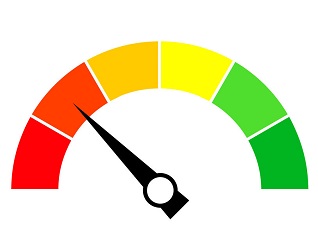
Clogging Filters Or Membrane: (Not Common)
Because the whole idea of using a reverse osmosis drinking water system is to remove unwanted contaminants from your water, any filters involved with capturing these contaminants can in time get clogged and not allow water to get through.
Fortunately, reverse osmosis drinking water systems come with easy to change pre-filters to capture the majority of larger particles before they can get deep inside of the system and cause any real problems.
Keeping an extra pre-filter on hand in case of large amounts of sediment cause blockage in your system will allow you to easily change the filter and get your system up and running in no time.
Having an external whole house filter to filter out sediment in your water long before it can get to your reverse osmosis drinking water system is always a good idea, and will help to protect the rest of your home as well.
If your water is hard or if your pre-filter gets worn out, some fine particles can get to the membrane of the system and cause poor water production. If this happens, change the membrane as well as all of the filters of the system to assure the system is working properly.

Initial Investment: (Maybe)
The cost of a reverse osmosis drinking water system can vary quite a bit. The most basic systems may be as little as $150.00. But don’t let a low price tag discourage you from choosing a reasonably priced reverse osmosis system.
I personally have found that for most people, a reverse osmosis drinking water system that costs just a few hundred dollars is more than adequate for their needs.
If you are on a private well, and you have a family of 4 or less, a reverse osmosis system ranging between $200 to $300 would be a great fit for you unless you would like some of the extra features that are available on some of the higher-priced units.
Many reverse osmosis systems have extra stages that are designed to make your water much better than a less expensive system, but I have found that most of these bells and whistles are not very necessary. With one exception!
If you are concerned about the negative effects of drinking acidic water, an acid-neutralizing cartridge or mineral cartridge is a nice additional stage to a reverse osmosis system.
This cartridge usually contains calcite to neutralize the acid that is in the water and it also will add a mild flavor to the water which people that are used to well water often like.
Other than the mineral cartridge, many other stages are redundant and are only beneficial if you have problem water.
A matter of fact, the more stages that your water will have to go through can greatly affect the time it takes to make filtered water and if the pressure of your home is not adequate, the quality of the water being made by the system may not be as good as a much simpler system.
If you want a reverse osmosis system that will not only remove dissolved solids like salts in your water. You may want a few nice additional stages to neutralize the acidic water that is made by reverse osmosis or even UV protection with an ultraviolet light stage.

Regular Filter Replacement: (Naturally)
I don’t like to refer to this as a con, it’s just the nature of the beast. A reverse osmosis drinking water system uses filters to provide better quality drinking water so naturally, those filters need to be replaced occasionally.
A second reason I don’t really consider this much of a con is because changing the filters is very easy to do and doesn’t take much time.
After changing their reverse osmosis filters a few times, most people are able to do it in a half-hour or less. And doing it yourself will save you big bucks compared to having your local water treatment pro come and do it.
See my article on How Often Should You Change Your Reverse Osmosis Filters. And How To Do It!
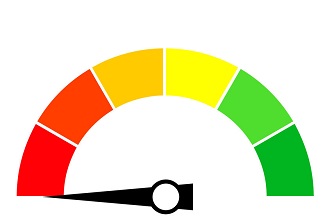
Slow Water Production: (But Not Really)
It is true that a standard home reverse osmosis drinking water system makes its filtered water rather slowly. But that doesn’t mean that you will have to wait a long time to fill up a glass with reverse osmosis water.
This is why a reverse osmosis system comes with a storage tank that provides you immediate water and several gallons of it. And because a reverse osmosis system continuously re-fills the storage tank, most families never think twice about filling their glass or personal water bottles.
A reverse osmosis system will produce high quality filtered water around the clock in order to keep your storage tank full and ready to go.
If you have a large family, or just need to use a large quantity of filtered water, adding a second reverse osmosis storage tank like this one I found right on Amazon or upgrading to a larger storage tank from Amazon is very easy to do, and at a very reasonable price.

Removal Of Beneficial Minerals: (Minimal)
The whole idea of getting a reverse osmosis drinking water system for your home is to remove minerals and contaminants from your drinking water. A reverse osmosis system can’t pick and choose exactly which things in your water it will remove or leave, so it will remove whatever it can.
In doing this, reverse osmosis may remove minerals from your water that you would rather have left in. Some may be healthy for you or might just simply make the water taste better.
Either way, a reverse osmosis system can have a mineral cartridge stage to add beneficial minerals to your water. This cartridge will add flavor to your water and most will raise the ph of the water which is believed to be healthier than low ph water.

Reverse Osmosis Water Is Too Pure: (Rarely)
This is actually more of a misunderstanding than a con because it is true that water is an excellent solvent and will absorb minerals when it is lacking minerals. But this is only true when water is extremely pure.
A reverse osmosis drinking water system in an average home will greatly reduce the level of contaminants and dissolved solids in the water.
But it is very rare that the water produced by a home reverse osmosis drinking water system will purify the water to such an extreme where the water will attempt to draw minerals from your body if you drink it.
Most reverse osmosis water will still have enough dissolved solids contained in it where it will not tend to easily absorb more from your body.
I’ve looked at several reverse osmosis drinking water systems and found only a few that I highly recommend. Check out my TOP reverse osmosis system picks.
Related Questions:
How long do reverse osmosis systems last? A properly maintained reverse osmosis drinking water system should last up to 15 years if the filters are changed regularly and the membrane is changed as needed.
There are some small parts on a reverse osmosis system that may need replacing over the years, like o rings or tubing fittings, but these are easily replaced at minimal expense.
Will not changing reverse osmosis filters often enough affect the life of an RO system? Generally, you should be changing your reverse osmosis filters once per year. Considering the small expense of the filters, it is worth it. The reverse osmosis membrane should be changed per manufacturer’s recommendation.
If your water supply is chlorinated you should have a carbon filter at one of the first stages of your system. If this carbon filter is not changed often enough, chlorine can get into your reverse osmosis membrane and damage it.
Get on a routine of changing your reverse osmosis filters yearly, whether it is around a holiday, a birthday or some other day to remind you to do it.


Hi there, thank you for the information on pros and cons of RO! Some questions:
1)We have a tankless water system at home…are we limited by this?
2) Do you have recommendations for a RO system? I think we’d prefer something from the kitchen rather than a whole house option due to space and the tankless issue.
Any leads would be greatly appreciated!
Maggie 🙂
Hello Maggie and thank you for the question.
A tankless water heater will have no effect on a reverse osmosis drinking water system as a reverse osmosis system should only be filtering cold water. See my article “Does Hot Water Ruin Water Filters“.
I have looked into many of the most popular reverse osmosis systems available on the market today and have put together my most recommended reverse osmosis drinking water systems with descriptions and recommendations of which one would be of most benefit to different people, and different situations.
Check out my Recommended Reverse Osmosis Systems to find the best one that suits you.
I hope this was helpful!
Paul
Hi Paul. Thanks for laying out the pros and cons of reverse osmosis systems. While I would love to have clean drinking water with a unit under my kitchen sink (the most economical possibility) I have another reason for investigating RO. My sister suffers a great deal from psoriasis and eczema, with very dry, itchy irritated skin. We’ve been trying gluten-free and corn-free diets, vitamin & mineral supplements, lotions, etc. But her condition persists. We’re wondering if purer water might not help her situation since she often spends HOURS in her baths, exfoliating her skin with coal tar soap and Dead Sea salts as part of her therapy. Is there a RO setup that allows the water to be used throughout the house rather than just the kitchen sink, perhaps one attached to the hot water heater in the basement? I’ve been reading that skin conditions can be helped dramatically with pure water rather than using hard tap water for bathing purposes.
Thanks for your time!
Sincerely,
Rosy Baldwin
Is there much water wasted? That is my main concern.
Hello Christie and thank you for the question.
Most reverse osmosis systems will discharge between 3 and 4 gallons of water down the drain for every 1 gallon of filtered water produced by the system.
This may seem like a lot of wasted water but if you are using 2 gallons of reverse osmosis water per day, you are sending only 6 to 8 gallons of water down the drain which is not much different than an extra few minutes in the shower or a few more flushes of a toilet.
See my article about “How a reverse osmosis system wastes water”
I hope this was helpful.
Paul
Hi Paul. I read in a Q&A on Amazon for a particular product that tankless RO systems can cause the water to be polluted if you don’t run the tankless systems regularly (for example, if you go away for the weekend). Basically, if they sit there unused the membranes and filters get irreversibly polluted was the comment. And that by their nature when you wake up in the morning your first glass or two of water is going to be a little more polluted. The comment stated that, because of this pollution issue, manufacturers of the tankless systems recommend that you remove the filters and cut the system off from power if you are going to be away for an amount of time. Does this sound right to you? Thanks!
Hello Jason and thank you for the excellent question.
It is correct that a reverse osmosis membrane is a semi-permeable membrane that will allow the reverse flow of water when at rest. This reverse flow often causes what is called “TDS Creep”. This is when the amount of Total Dissolved Solids (TDS) can “creep” up when the system is left at rest for a long period of time.
This can be more of an issue in a tankless reverse osmosis system if there is a fluctuation of water pressure due to water being used elsewhere in the water supply line but when the water stays under the same pressure, the amount of TDS Creep is usually very minimal.
I do agree that if ANY reverse osmosis system is going to be left unused for more than just a few days, the water in the system should be purged to allow fresh-made water to be made.
In the case of a commercial and tankless reverse osmosis system, removing the filters and membrane from the system if the system is to be idle for an extended period of time is a good idea if it is removing high amounts of TDS but if the TDS is low, purging a system that has been idle for a few weeks should not be much of a problem providing the system has been kept under constant water pressure.
I hope this was helpful.
Paul
Following up on my comment from earlier today, the exact quote in the Q&A for the product (https://www.amazon.com/gp/product/B083DFW1QS/ref=ask_ql_qh_dp_hza) is as follows:
“2) When the water sits unused in the system, solids dissolve across the RO membrane in the wrong direction. The RO membrane is not one-way when it is at rest. So if there is no pressure on the membrane-any time the system is not in use, for instance-then the water in the lines and in the system will slowly start to become recontaminated with the solids from the tap. It’s a very slow process, but overnight, when the system is not in use, the water from the system will become slightly less pure than normal. I imagine the contamination would spread all the way to the alkalization stage filter, potentially contaminating it in such a way that it would be impossible to reverse.
Apparently this problem affects all tankless systems. It is a limitation of having no tank.
It is potentially so problematic that the manufacturer recommends that if one were to not use the system for a period of longer than two days that it should be disconnected from the power, and if subjected to longer than seven days of rest, the two main filters should be removed from the main system and refrigerated for the period of rest.”
Is this too good to be true
WAPU-Reverse-Osmosis-System-Outlet
600 GPD seems like a whole lot. but is 90% TDS not high
Hello Seth and thank you for the question.
It looks like a very interesting filtering system and I can understand why you would ask if it is too good to be true.
I have not seen this system before but if it claims to provide up to 600 gallons of reverse osmosis water per day, I can understand why it would only remove up to 90% of TDS and I would expect that it would not remove that much for long because a reverse osmosis membrane that would provide that much volume would most likely wear quickly.
I like the system on paper, but I would prefer a simpler system with fewer bells and whistles.
Hope this helps
Paul